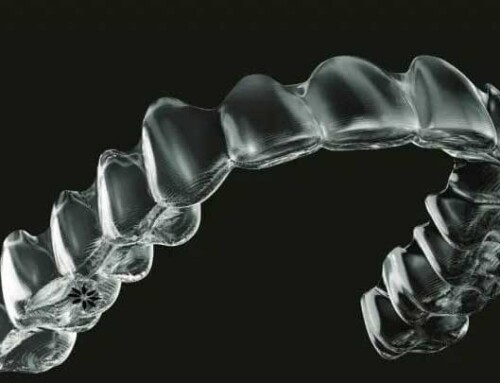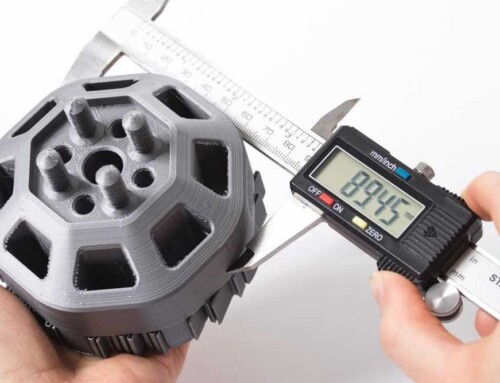When we discuss the role of 3D printing in manufacturing, we usually consider the way that additive manufacturing will eventually replace traditional technologies. In fact, many AM hardware developers effectively market their machines as direct substitutes for CNC machine tools or injection molding systems.
In addition to augmenting existing technologies such as CNC machining, injection molding, sheet metal manufacture, extrusion, and casting, 3D printing can also be used to implement new products.
This is because AM systems—whether industrial metal technologies such as DMLS or plastic technologies such as FDM or SLS—can be used to create 3D printing tooling for these processes, accelerating and/or improving production to provide better results.
This article looks at how 3D printing tooling can shape the future of prototyping and low-volume production. It discusses different kinds of 3D printing tooling, why 3D printing tooling is useful, and what materials are available.
1. Types of 3D printing Tooling
Tooling is a general term used to describe various fixing, supporting or forming mechanisms used in the manufacturing process. The mold of a part can consist of one or several parts, usually made of strong material, such as tool steel. 3D printing can be used to make a variety of molds.
However, some components are easier to manufacture than others, and some components can only be manufactured using high-end AM equipment.
1) Mold
A mold is a hollow container filled with materials for making parts. Mold making is usually achieved through machining, but 3D printing—plus high-temperature materials—is becoming a viable option for certain parts.
Molds that are printed may need a great deal of finishing before they can be used, but their production speed has become a boon in the manufacturing industry prototype company.
According to the German AM company EOS, “3D printing can produce the most complex structures with high quality in a short period of time, which means that it provides obvious advantages for mold manufacturing.”
2) Jigs
Jigs is a customized workpiece fixture used to improve the consistency of parts during the manufacturing process. It is usually used to guide and control the movement of the tool.
3D printers are becoming more and more useful in manufacturing custom products such as jigs and fixtures because the process is not expensive for disposable parts. 3D printing fixtures and fixture manufacturers can also greatly shorten the lead time, especially if the printing is done in-house.
3) Fixtures
A fixture is a customized workpiece fixture used to fix the workpiece during the manufacturing process, usually by machining. Unlike fixtures, workpieces are usually specific to the part being manufactured, not specific to the manufacturing equipment.
Fixtures and fixtures can be 3D printed on metal or engineering plastics, such as TPU or carbon fibre reinforced nylon.
4) Extrusion die
The mold is a thick steel plate with formed holes. During the extrusion process, a material is forced through the opening of the mold, creating a long section with a cross-section that matches the hole diameter of the mold.
Like molds, molds are usually made of high-temperature resistant materials, such as steel, and it has become easier to print these materials using processes such as DMLS and SLM.
2. Advantages of 3D printing tooling
Here are some reasons why people like to use 3D printing tooling.
1) Conformal cooling channel
In injection molding and other processes, the cooling channel is used to inject coolant around the molten material to make it evenly cooled and hardened. This helps prevent deformation and deformation of the molded part.
In ordinary molds, the channels are usually straightforward because it is more difficult to machine more complex shapes. But 3D printing can create conformal cooling channels: channels along the contour of the part so that every area of the part will be equally affected by the coolant.
According to Desktop Metal, a metal AM expert, “Parts with complex designs and internal structures—such as conformal cooling channels for custom molds—are very suitable for additive manufacturing. In this case, the manufacturing time and the cost of each part It does not necessarily depend on the complexity of the design.”
2) Rapid manufacturing
3D printing is a fast prototyping service and requires minimal setup or preparation time. This allows rapid production of tools-if the tool is damaged or needs to be changed, the tool can also be reused immediately.
Although 3D printing tooling is still in their infancy and is not favoured by most manufacturers (or customers), they have become an important factor in rapid prototyping. In this process, the consideration of delivery time takes precedence over other factors.
3D printing tooling will have a major impact on the future of prototypes because it significantly speeds up the traditional prototyping process.
3) Affordable and effective
Tools can be very expensive, especially when several components are required or the design is particularly complex. 3D printing can reduce the cost of molds, because a complex and complicated design can be manufactured almost as quickly as a simple design.
AM is also effective in the material used because it does not involve cutting scrap from the workpiece. Finally, any method that can drastically cut costs during the prototyping phase will eventually play an increasingly important role in the prototyping process.
3D printer manufacturer Markforged stated that they “see that manufacturers can use 10-50% of durable tools for 3D printing in their production process”, “considering that the average cost savings of 3D printed parts relative to machined parts are 80%, Which represents great value.”
4) Can be used in different processes
3D printing tooling can be used in several unique manufacturing processes, including:
- Die casting
- Injection
- Extrusion
- CNC machining
- Sheet metal manufacturing
5) Best AM mold material
Here are some best AM mold materials:
Tool steel
Tool steel is hard steel suitable for demanding manufacturing applications. Due to its hardness, it takes a long time to accurately process. However, some metal 3D printing technologies can print materials, which creates opportunities for 3D printing projects such as injection molds.
Industrial AM company EOS produces a series of 3D printing tool steel powders, including maraging steel and tool steel 1.2709.
Inconel
Processes like DMLS and SLM can be used to print Inconel nickel alloy molds. Inconel is resistant to high temperatures, making it suitable for a variety of mold applications, including forming and extrusion.
Composite material
When making 3D printing tooling such as jigs and jigs, composite materials such as carbon fiber reinforced nylon or PEEK can be used as substitutes for high-strength metals.
Engineering thermoplastics
Stratasys, a 3D printing company, recommends using high-performance FDM materials (such as TPU, reinforced nylon or ASA) to make certain jigs and fixtures.
Holly is a rapid prototyping expert with many years of experience in machining, additive manufacturing and other disciplines. Contact us for a free quote.



Leave A Comment